ONE HUNDRED FEET AWAY, to the left of a long mangrove shoot sticking out of the water like a miniature channel marker, a swirl on the water’s surface catches our eyes. “I like that,” Nick Castillo
says, as he deftly closes the distance and I strip a bit more fly line from my reel. “Yeah, I like that a lot.”
It’s early. The sun hasn’t yet crested the low mangroves to the east, but there’s just enough light that the whole world is cast in a monochromatic sheen—each element an inky outline, void of detail. Deep into Biscayne Bay, off the shore of Key Largo, the Florida mainland is a silhouette. The mangrove shoot, the swirls of water, the fly line now unrolling over the grass flat, and the shrimp fly plopping in the water, and the dark shape of the fish turning to investigate—all are in silhouette. When the fish strikes, I feel it as much as I see it—its weight in the rod, the line leaping from my stripping hand to shoot through the rod guides.
So I can’t pick out the details as the fish streaks across the flat, but I can sense its rushing power. And at that moment, I recognize that the silhouette of that bonefish turning on that fly is emblematic of a much more meaningful story than hooking up with a gray ghost before sunrise. No one is quite sure why or when it started, or how long the bounty will last, and no one knows all the details yet, but this much is clear: The bonefish of the Florida Keys are back.
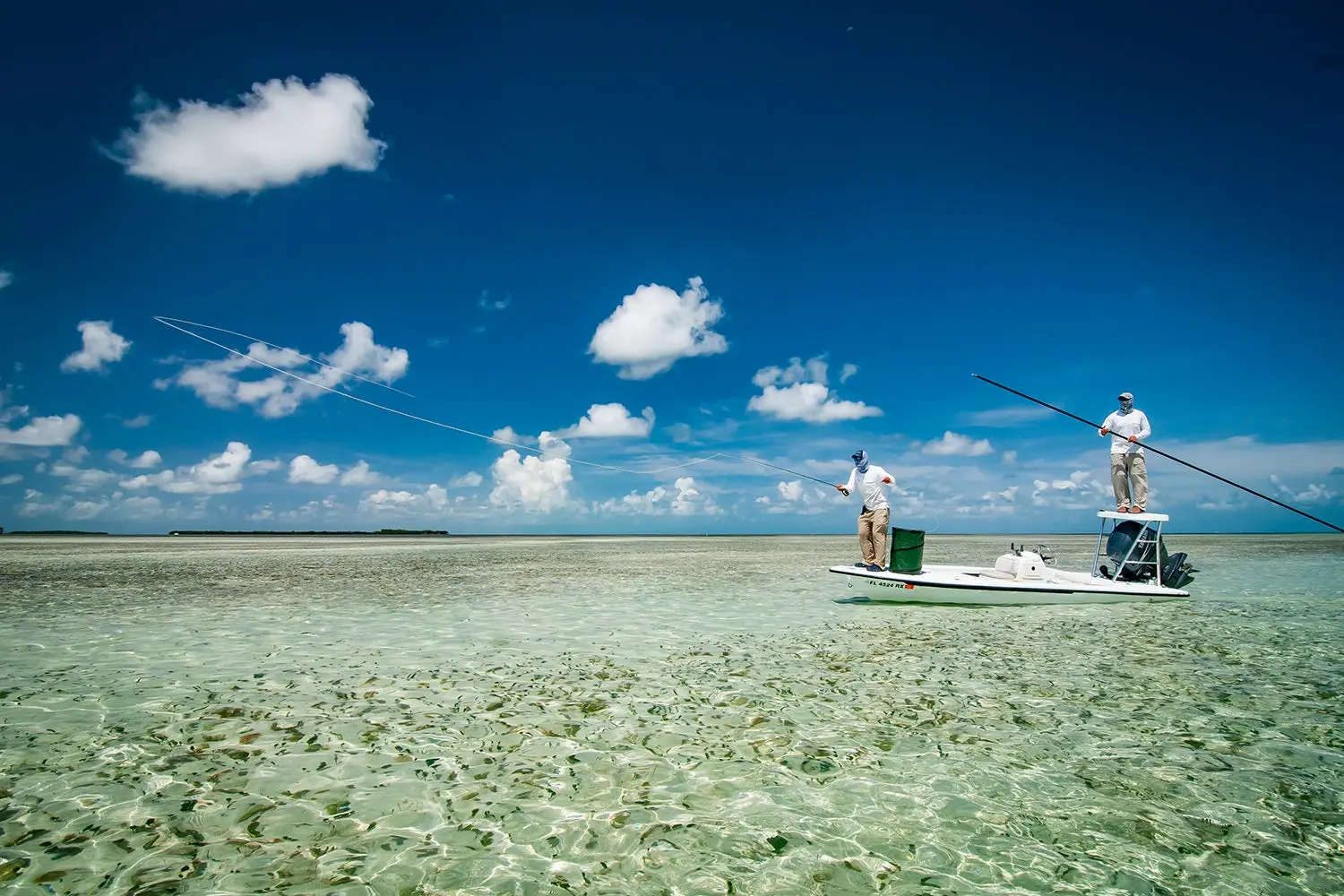
David McCleaf
The reports have dribbled in over the past few years: Guides seeing large schools of 2- to 4-pound bonefish on both sides of the Florida Keys… Anglers consistently catching 4-pound bones… The occasional 8- or 10-pounder being brought to hand… In the lower Keys, tournament anglers have recently put up numbers practically unseen since the 1950s… From top to bottom, from Biscayne Bay to Key West, whispered hopes have become a cautious chorus. After nearly a decade during which the famed flats fish seemed to have largely disappeared, guides and anglers are positively breathless about the revival.
“It’s more than a comeback,” says Sandy Moret, owner of Florida Keys Outfitters
, who’s guided for more than three decades. “It’s like a landslide of bonefish sometimes. We’re not finding the 12-pounders with their fins out of the water and slithering all about. But there are lots of 4- and 5-pound fish, when a couple of years ago they were mostly 2 and 3 pounds. And they’re only going to get bigger.”
What comes next is anyone’s guess—and the focus of some of the most impactful fisheries research on the planet. But for now, it’s a welcome shot of great news for anglers: Over the next few years, bonefishing in the Florida Keys should be better than it has been in years.
Back From the Dead
Bonefish are an iconic species, pursued by anglers with live bait and lures, but their famous 40-mph sprints have fueled a craze over fly fishing for bonefish, in particular, that has transformed entire South Florida communities. While you can drown bait for the fish, sight-fishing for bonefish is the preferred tactic for many. From a poling skiff, an angler and often a guide search the flats for bonefish, their shadows, and their tails. While the other typical saltwater flats species of the area—tarpon and permit—are the more famed and beloved targets, they can attract a different angler clientele. It’s not that bonefish are easy to catch. But they can definitely be more accessible to less well-off anglers, and the tackle used to bring them to heel isn’t the big-game, big-budget equipment of other angling pursuits in the area. Still, the popularity of bonefishing makes them part of an impressive economic engine in the Keys. According to a study by scientists at the University of Miami, a single bonefish, over the course of its life, is worth some $75,000 in returned economic activity to South Florida.
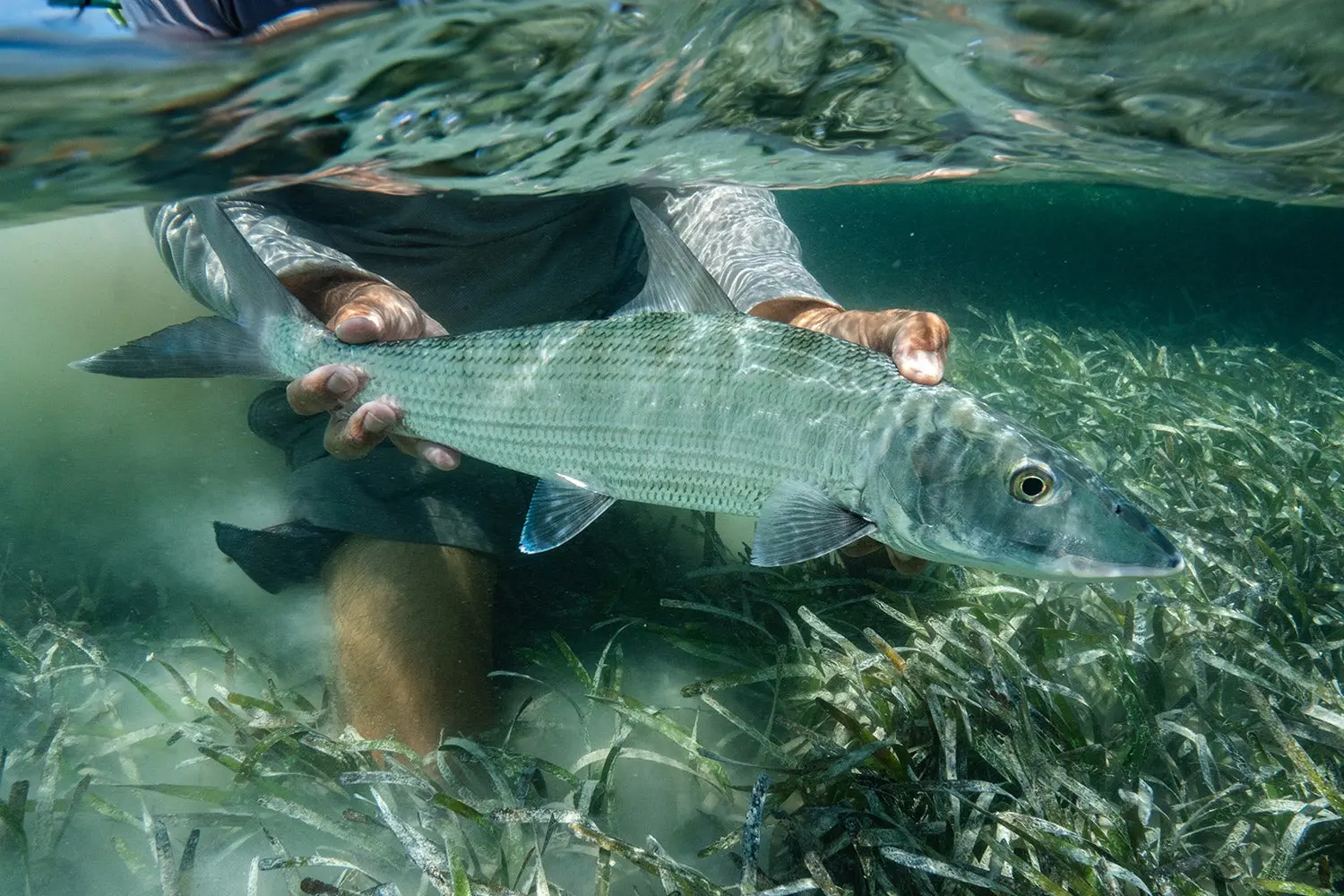
Ian Wilson
For years, the epicenter of the action was in Islamorada—a chain of six separate islands within the larger Florida Keys archipelago. It’s where the baseball star Ted Williams had a penchant for hunting double-digit bonefish. The flats just off the town shores, dubbed “Downtown,” attracted the likes of Ernest Hemingway and President George H.W. Bush, who started a local bonefish tournament there. And bonefishing drove a local economy that ranged from mom-and-pop roadside motels to swanky digs like Cheeca Lodge and the Postcard Inn.
But during the 1990s, the bonefish population in the Keys tailed off, then dropped precipitously. Even Islamorada was in the bonefish doldrums. Poor water quality was likely one culprit. In 1999, Monroe County, which includes all of the Florida Keys, was ordered to build a modern wastewater sewage system, but it took nearly 20 years to complete. Miami and all of South Florida had exploded in population. Meanwhile, municipal sewage in the Florida Keys was pumped into septic tanks and field and shallow injection wells, all notorious for leaking into the nearby bays and sounds. From 1990 to 1998, guides reported catching bonefish on six out of 10 trips. Between 1999 and 2009, the percentage dropped to less than half. Then, in January of 2010, three back-to-back cold fronts swept across the Florida Keys, dropping water temperatures in Florida Bay to an unheard-of upper 30s. For the island chain’s famed bonefish, it was a knockout punch. Guide success plummeted to only 37 percent over the next four years. The flood tide of ill news continued: A massive seagrass die-off in 2014 and 2015 wiped out an estimated 62 square miles of vibrant underwater meadows of turtle grass, manatee grass, and shoal grass in Florida Bay. Bonefishing got even worse. Many anglers simply quit targeting the fish.
Which makes the rebound all the more impressive.
Doctorate in Bonefishing
Castillo and I had actually kicked off our bonefish odyssey a few months earlier, on those storied Islamorada flats. I had booked two days of fishing, and when my first day with a different guide was bushwhacked by rough weather, the pressure was on Castillo to show me the goods.
Rangy and bearded, with dark hair falling past his shoulders, Castillo has a unique perspective on bonefish. He grew up in Fort Myers, north of typical bonefish habitat, but got hooked on the fish as he started guiding in the Keys in 2015. When we fished, he was finishing up his Ph.D work at Florida International University, studying the presence of pharmaceuticals in Florida Keys bonefish. In his research, funded largely by the Bonefish & Tarpon Trust
, drugs, such as blood pressure medicine and antidepressants, were found in every sampled bonefish. Individual bonefish carried an average of seven different medicines in their blood and tissue, while one particular bonefish was found to be contaminated with 17 different pharmaceuticals. The news of doped-up gamefish caused an international media sensation, but Castillo, still a part-time guide on top of his full-time research load, remains pretty bullish on the future of the fish in the Florida archipelago.
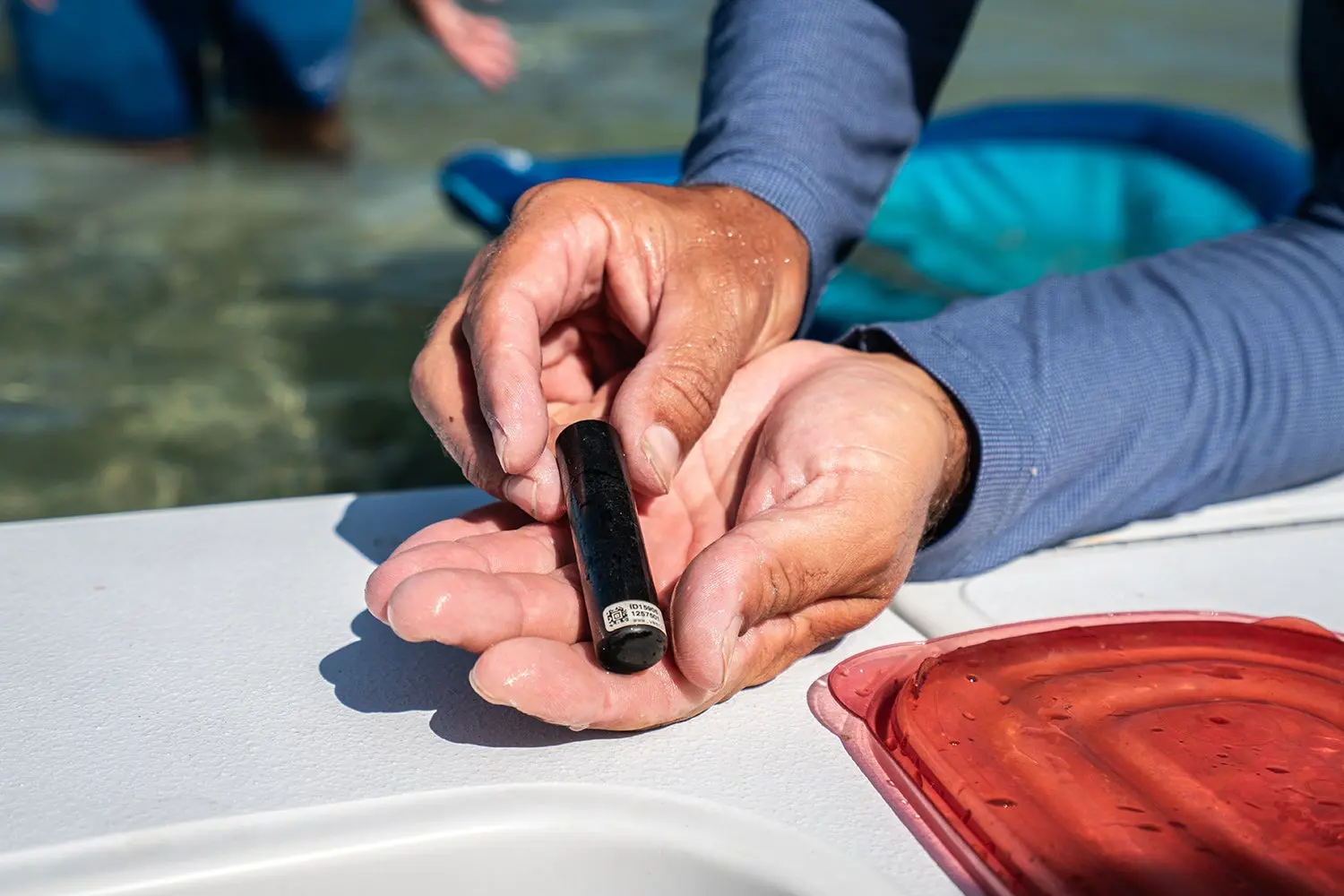
Ian Wilson
Castillo started fishing for bones, he says, during the worst of the population crash. “Back then, they were really more of a mythical creature for me,” he says. But no longer. In the last four years, he’s caught four bonefish over 10 pounds in Biscayne Bay, and an 8-pounder off the Islamorada flats. And bigger ones are out there.
In 2007, a former Keys guide named Bob Schroeder cast a live shrimp to a monster bonefish off Islamorada—and then held on. The 16-pound 3-ounce beast pulled more than 200 yards from Schroeder’s spinning reel before it stopped its initial run. It’s the largest bonefish ever caught in Florida, but it was denied line-class world-record status because Schroeder’s 10-pound braid tested at more than 20 pounds during the International Game Fish Association’s testing protocols.
We launched into the waters off Islamorada on the heels of a three-day blow, which had scattered bait and predators and gunked up what should have been clear waters. Still, Castillo found fish. For an hour he tried to work his way to two schools of bonefish feeding in super-shallow water—their backs, dorsal fins, and tails so exposed they must have been crawling with their lips. “This boat doesn’t levitate?” I asked. If only.
Later in the afternoon, Castillo sighted a pair of moving bonefish that sent him on an adrenaline-fueled poling frenzy. Each fish ran better than 12 pounds, he figured. He poled like a madman but couldn’t close the distance. At the time, it seemed like an apt metaphor: A man who knows as much as anyone about what makes a bonefish tick was frustrated by how difficult they can be to intercept.
Plenty of anglers understand that feeling.
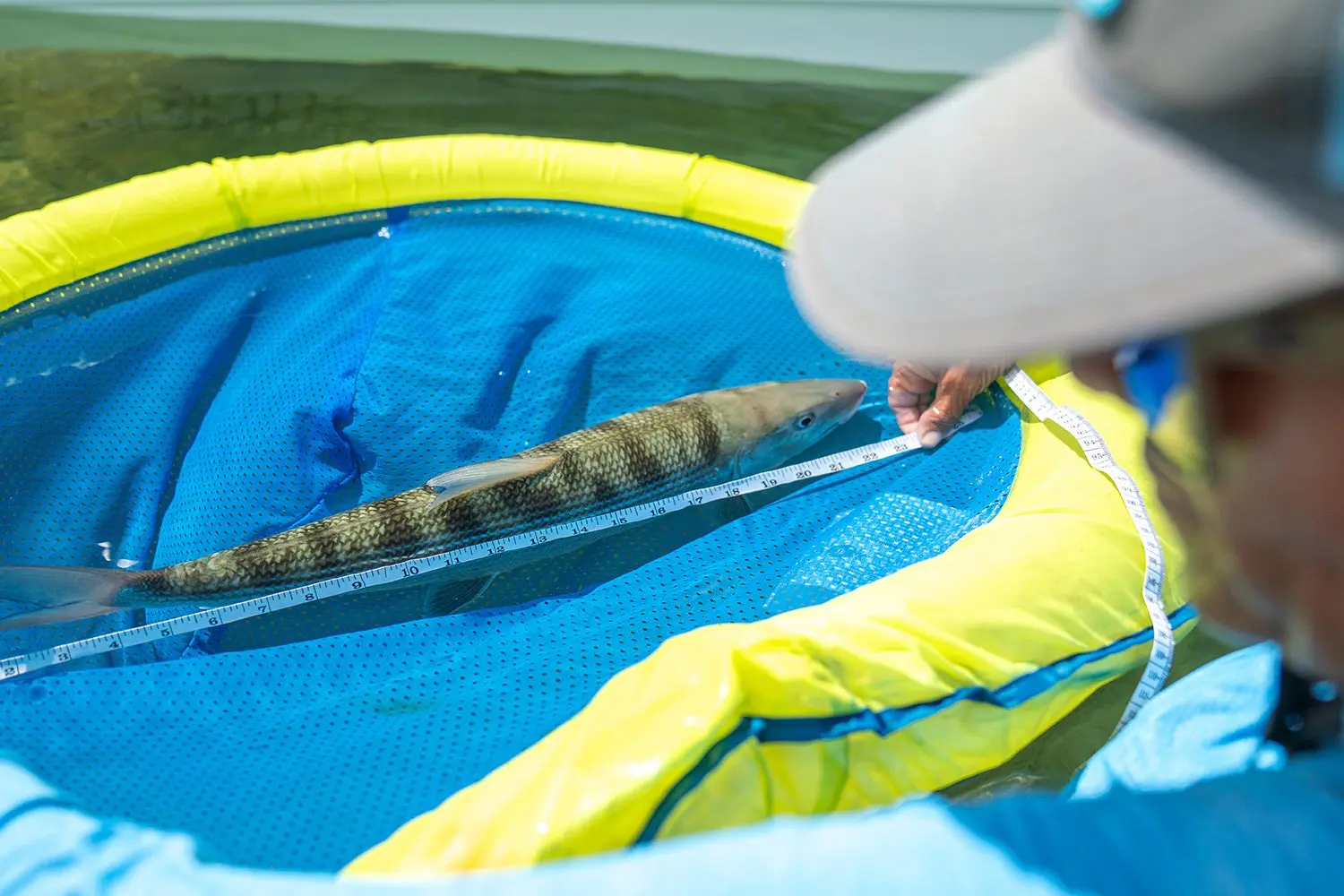
Bonefish & Tarpon Trust collaborating scientist Dr. Jennifer Rehage measures a Florida Keys bonefish before it gets tagged. Ian Wilson
Tagging Along
Four years ago, I fished for bonefish off Islamorada with Dr. Ross Boucek, manager of the Bonefish & Tarpon Trust
’s Florida Keys Initiative. We weren’t exactly sportfishing. We caught bonefish on live shrimp, then I watched Boucek surgically implant an acoustic tag into the belly of a bonefish resting in a specialized floating operating table. The study was one of the first in the Keys to drill down on the particulars of bonefish migration and spawning, and it’s astonishing to consider that such an effort was practically the Dark Ages when it comes to what we’ve learned about bonefish in the few years since.
That project helped unravel the migration patterns of bonefish and how populations in Belize, Mexico, and the Bahamas are connected to Florida’s fish. But it also led researchers to undertake one of the Holy Grails in saltwater fisheries science.
To spawn, bonefish migrate to specific sites and gather in what are called pre-spawn aggregations—or PSAs—that can number in the thousands of fish. Where these PSAs move to spawn had long been a mystery to scientists, especially in the Florida Keys. Researchers had pinned down a half dozen sites for Bahamas bonefish—and the island nation wisely created new national parks to protect much of their critical habitat—but until the past year, no one knew where Florida Keys bonefish spawned. Given how popular the fishery had become, and how populated are the Florida Keys, that seemed a little crazy.
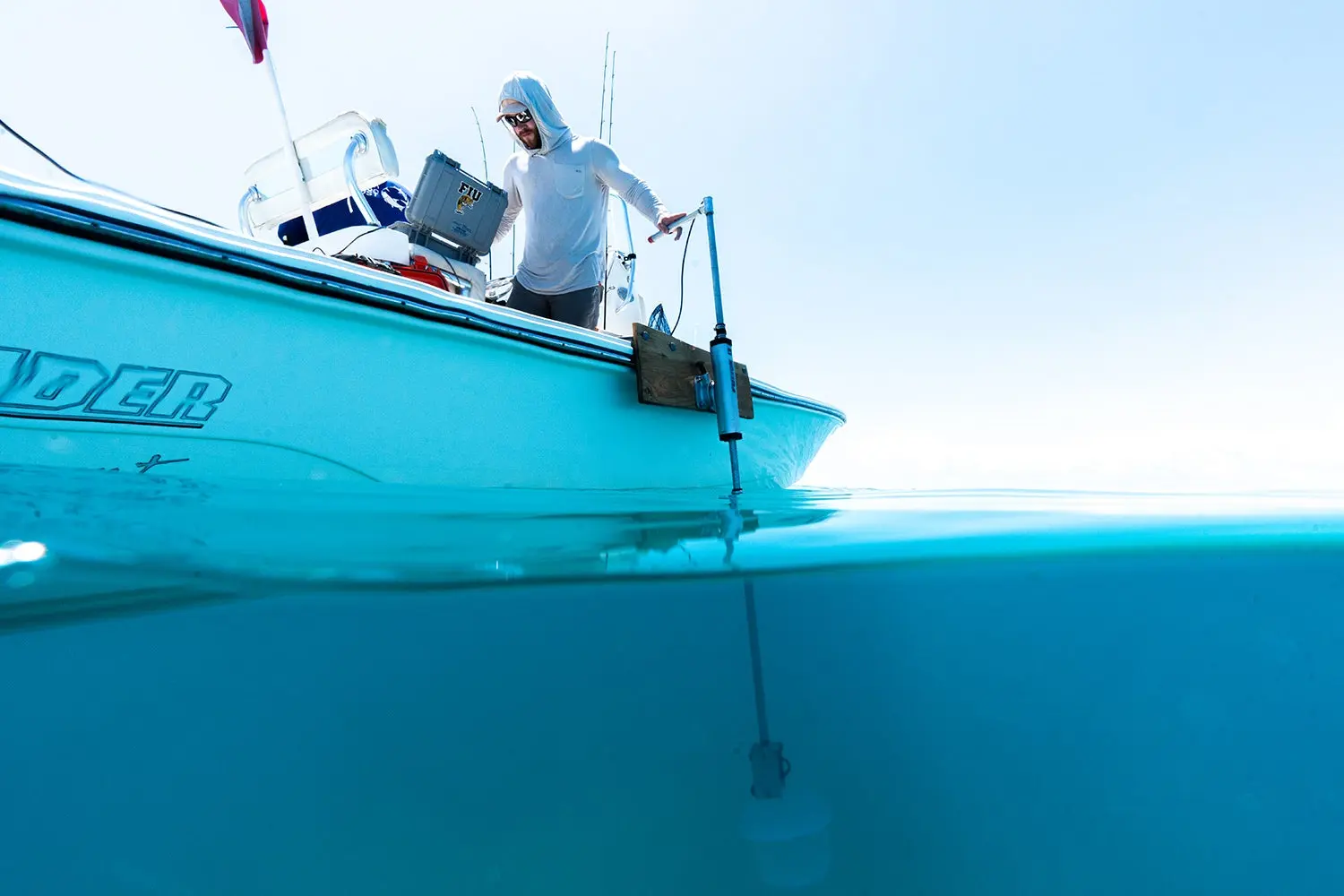
Ian Wilson
The hunt for the Florida spawning sites has been like something out of a John le Carré novel. Over the past two years, BTT scientists and researchers and students from FIU used an old-school/new-school approach to home in on the spawning habitats.
First, they conducted extensive oral-history interviews with longtime fishing guides to uncover places where massed bonefish had been seen before. Meanwhile, they set up a massive electronic dragnet from Key West to Biscayne Bay, covering the coastline with four different kinds of radio telemetry and acoustic tags. A specialized acoustic transmitter was deployed that would text the scientists whenever a tagged fish passed. Then Boucek and his team of technicians and interns cleared their calendars around the first and full moons. For days on end, they searched for massing fish on the organization’s 23-foot Pathfinder, and used onboard tracking gear to manually trail marked fish.
It took two years of trial and error, but last April the scientists tracked and followed a bonefish PSA for more than 18 hours off the coral reefs that outline the Upper Keys. With Boucek and his team trailing behind, a school of bonefish thousands strong moved offshore and then dove to nearly 450 feet deep. One of the fish carried an implanted acoustic tag. On their tracking array, the researchers watched as the tag continued to drop below the school. It settled to the ocean bottom at 700 feet deep. While spawning, the bonefish had ejected the tag. It was the first time in history anyone had witnessed a Florida Keys bonefish spawn.
As more details emerge about the bonefish life cycle, and the specific areas most critical to their spawning success, scientists can work on conservation efforts for the species. Moving forward will require a closer relationship between recreational anglers and fisheries researchers. Bonefish guides were critical to the discovery of the spawning sites in the Florida Keys and beyond. And elsewhere, anglers for permit, striped bass, false albacore, and other species are pitching in to aid researchers in collecting data on their favored targets. Scientists like Boucek and Castillo underscore a growing relationship between the angling and scientific communities—a recent phenomenon that should benefit fisheries conservation.

Ian Wilson
Anglers have their own important roles to play. A culture is coalescing around the philosophy of minimizing angler impacts on fisheries resources, a movement that encompasses freshwater fishing as well. Florida changed its laws in 2013 to make bonefish a catch-and-release only fishery, and now the thought of keeping a bonefish isn’t even an issue. And these days, folks who post a photograph of an angler holding a bonefish over a boat are taking a chance on getting called out for poor handling practices.
The Heat Is On
Perhaps the first known Florida Keys bonefish caught on a fly was hooked and landed not far from our sunrise encounter in Card Sound, just off Key Largo. George X. Sand wrote about the fish in the 1969 book Salt-Water Fly Fishing. In 1924, a Miami angler named Holmes Allen was casting for snook when a “crazy fish shot out of nowhere,” he reported, “grabbed my fly and took off!” The crazy critter was a bonefish, fooled by a size 2 crippled minnow fly. Allen isn’t credited with being the first to purposefully cast to and catch a Florida Keys bonefish, but as many an ardent bonefisher would admit, they’d take an accidental bone any day of the week.
But on that Biscayne Bay flat, with the sun starting to peek over the horizon and Castillo on the poling platform, my fight was no happenstance.“Rod tip up! Up-up-up-up!” Castillo said, as the bonefish did what bonefish do, which is burn rubber to put as much distance and fly line between themselves and the boat. The fish headed for a patch of widely scattered mangrove shoots, and I steered it clear of the propagules, just sturdy enough to part a leader if the fish got around them.
“Up-up-up!” Castillo said—but there’s only so much “up” in a fairly short man. I did what I could to keep the fish’s head on the incline, point the rod tip to Pluto, and step up on my tippy-toes to keep his mouth out of the turtle grass and manatee grass where it would have liked nothing more than to scrape the fly out of its snout.
Then the fish changed course, and Castillo changed his tune. “Reel-reel-reel-reel-reel!” he hollered. I was already reeling like crazy, because even I know what it looks like when a bonefish is charging the boat. We landed the fish by hand, gently, and snapped a quick photo over the water before the release.

Brett Greco
And for the next few hours, the bonefish of Biscayne Bay gave us a show—following, ignoring, coming in schools and singles and doubles. There was my usual potluck of screw-ups—line management snafus are a specialty—and I blew my next two shots. But we saw schools of permit nosing across the flats. There were sea turtles, skates, and sharks. And there were bonefish on five of the first six flats Castillo poled.
By late morning, the fishing was largely cut off. When we launched the boat before sunrise, the water temperature at Lorelai Marina was already 90.1 degrees. By midday, air temperatures had already soared to near 95 degrees and were headed for record-breaking levels. Bonefish tend to vacate the flats when the water hits about 92 degrees, and if we hadn’t already crossed that threshold, it was close. The scientist in Castillo figured the heat helped shut down the bite. The advocate in both of us told us that it wasn’t fair to keep fishing. It’s another concern for bonefish scientists and bonefish fans: As global waters warm, it’s anyone’s guess as to how bonefish will ultimately react. Building in resiliency, both in terms of healthy and abundant habitat and population numbers, will be key to the fish’s future.
But blaming the heat entirely is an excuse. I still saw a pile of bonefish and had my chances. While it is true that it might have quickly grown too hot for bonefish to eat, it’s also true that the fish don’t care for a too-often-tangled 13-foot leader.
But they were there. They are there. For now, and hopefully, for a long time to come.
If You Go: Bunking for Bones
There’s no way around it: Guided fishing for Florida Keys bonefish can get spendy. Guides will run $800 to $1,000-plus per day, plus tip, which is not off the charts, especially if you split it with a pal. But the lodging knocks the stuffing out of your budget. The average tab for a night in a decent hotel is $4 million dollars. Or seems like it.
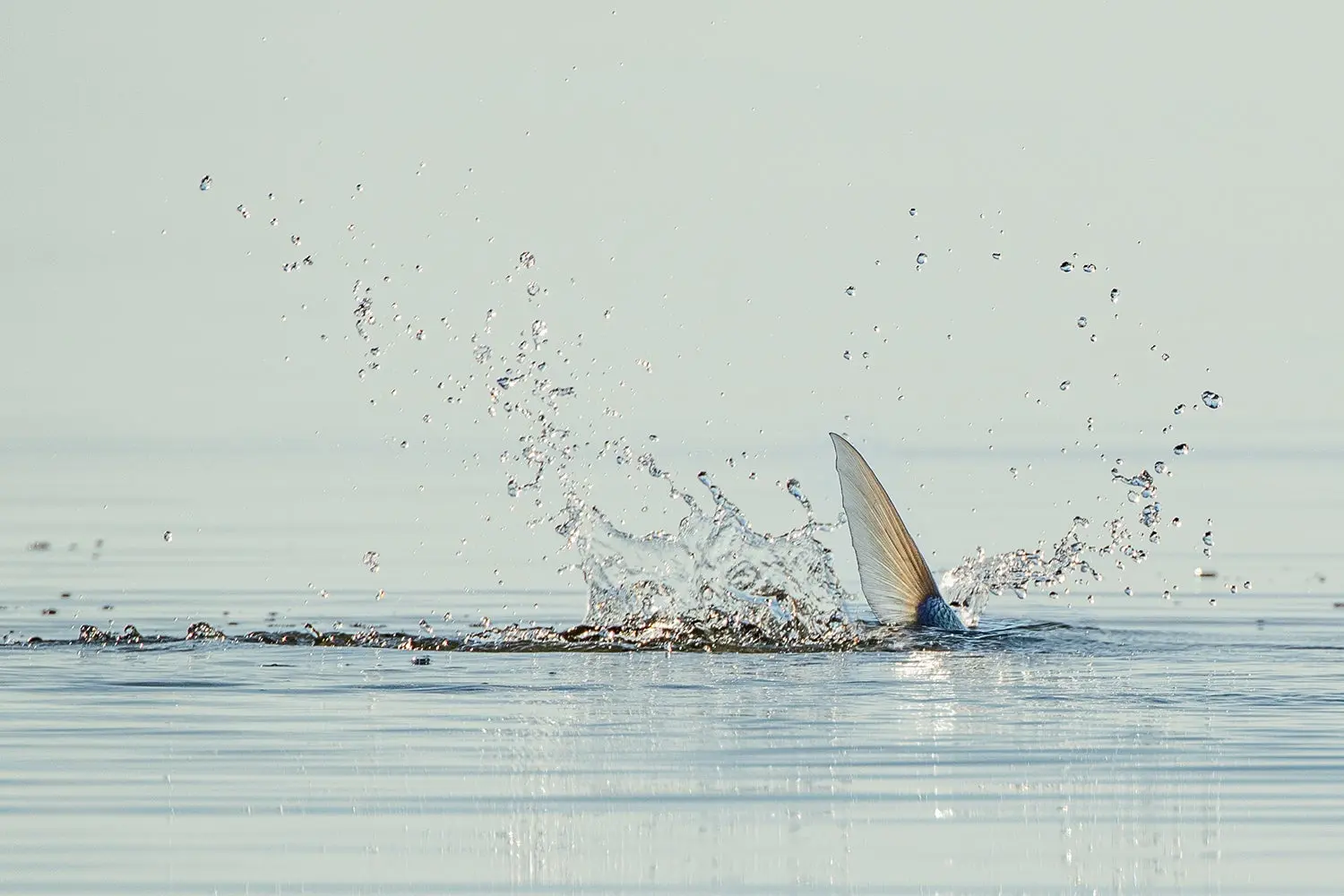
David McCleaf
In Islamorada, I actually did find a great spot at the Postcard Inn
. It’s a sweet mini-resort getting a top-to-bottom makeover this winter, where a large room with a great ocean view came in just north of $200 a night. I had my wife with me on that trip, and the cool pool and tiki bars did not go unappreciated. Or underutilized.
For my trip to Biscayne Bay, my budget was blown and I was traveling solo. There, I bunked at the turquoise-blue Hoosville Hostel
, lovingly nestled between an out-of-business café and El Tacazo, a taqueria where you can stuff yourself with crazy-good onion steak and rice and beans for 12 bucks. And yes, that is hostel with an s; not hotel. Sixty bucks scores you a single room with a bare lightbulb and a surprisingly comfortable bed, a shared bathroom that registered at least 120 degrees, and sprawling, shaded grounds where, yes, you can pet the caged rabbits. Best of all: It was only 18 minutes to the Homestead Bayfront Park Marina, where I met Castillo for our second grudge-match round of bonefishing. It’s not for everyone, but I’d stay there again in a minute. —T.E.N.
_Read more F&S+
stories._






